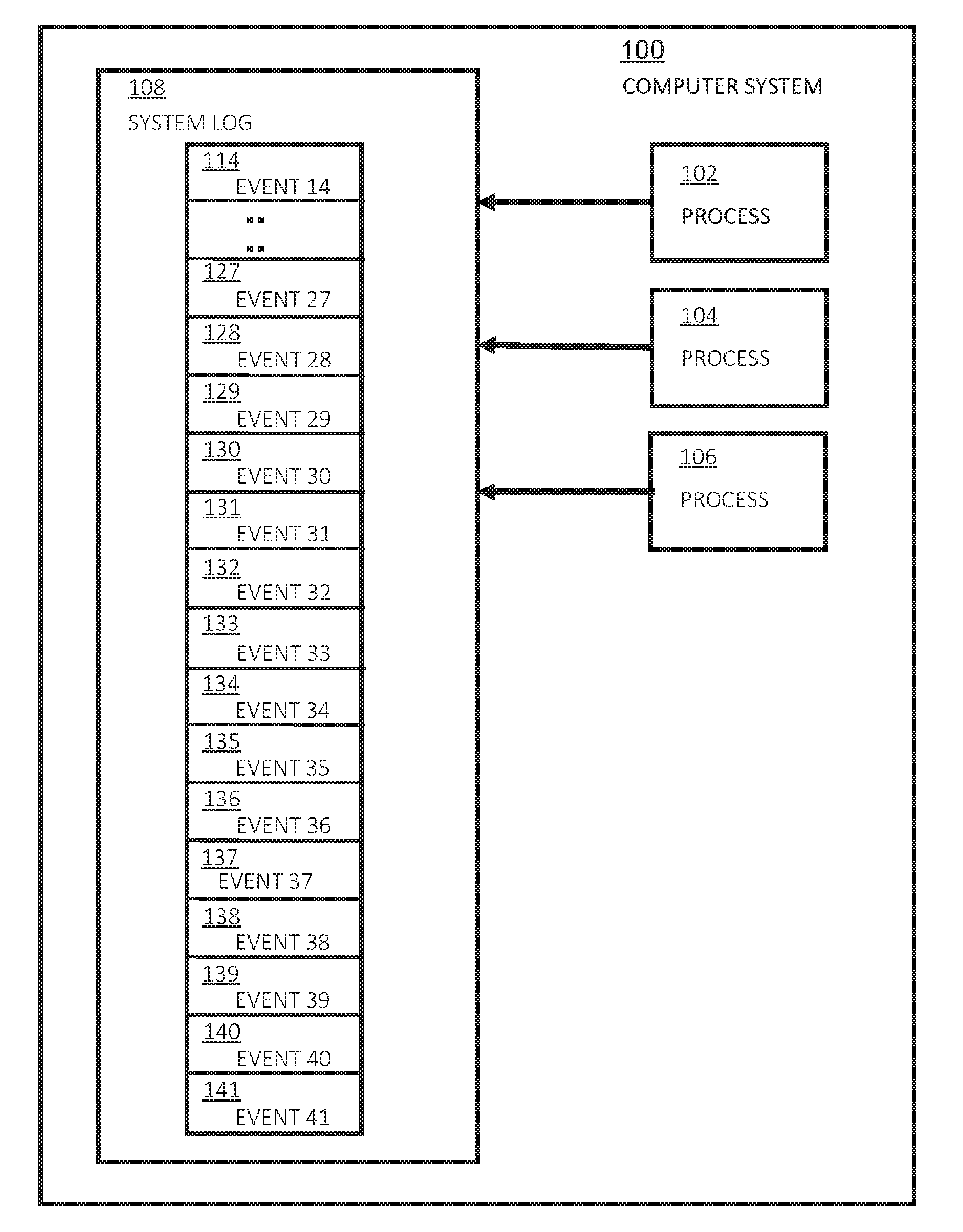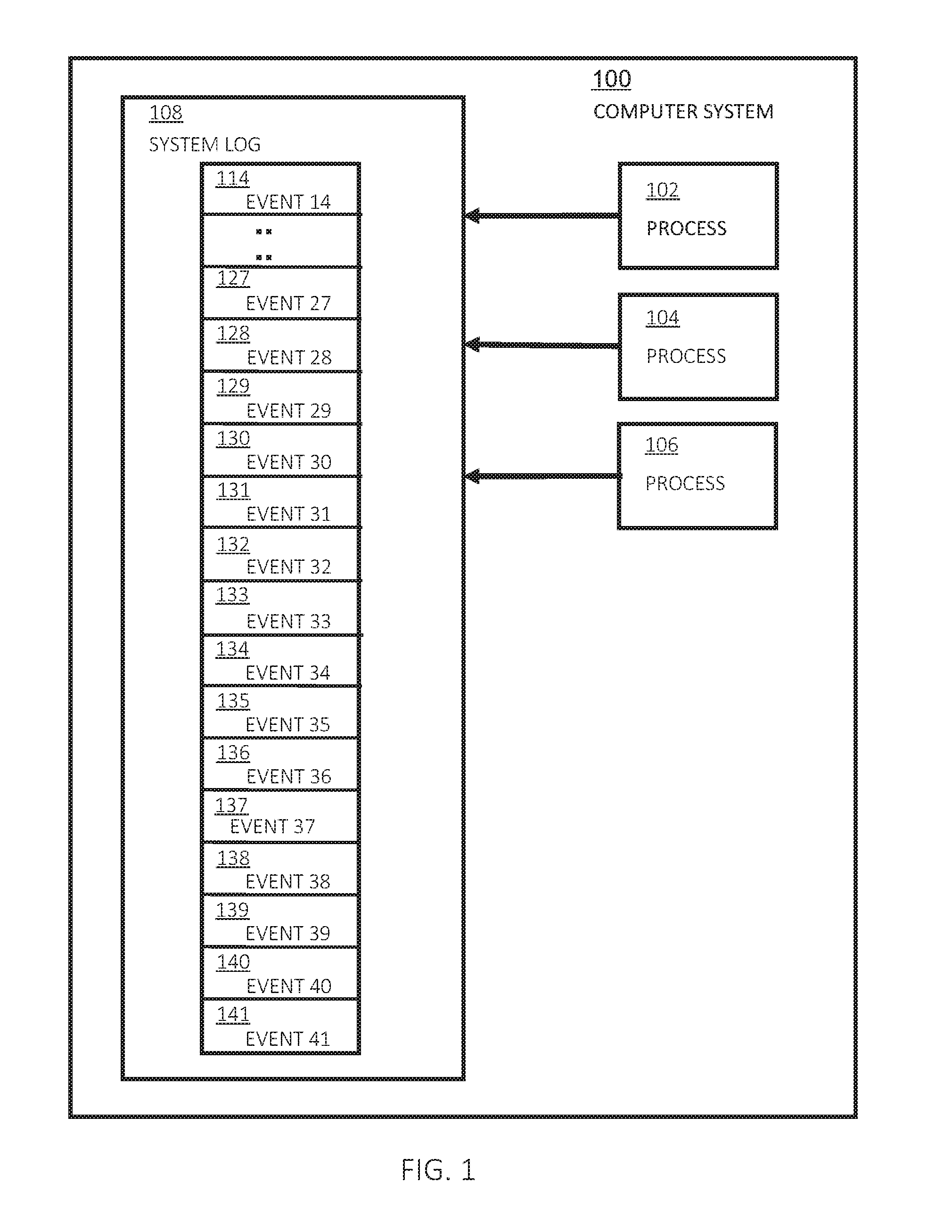Behavioral model based on short and long range event correlations in system traces
a behavior model and event correlation technology, applied in the field of generation of behavioral models, can solve the problems of reducing the accuracy of determining anomalies, affecting the normal behavior of users, and the difficulty of mimicry attacks on real systems, so as to achieve the effect of facilitating the determination of normal behavior
- Summary
- Abstract
- Description
- Claims
- Application Information
AI Technical Summary
Benefits of technology
Problems solved by technology
Method used
Image
Examples
Embodiment Construction
[0039]Embodiments of the present invention generate a behavioral model that uses two types of correlation between computer system events, short range correlations (n-grams) and long range correlations (groups and group arrangements) between n-grams. Processes running on the computer system perform events, which are recorded in the system log. The events are collectively referred to, herein, as activity or behavior of the computer system. The behavioral model is based on the assumption that system traces contain a number of finite sub-traces (strands) that describe complete transaction-like system activity. O. Pieczul and S. N. Foley, “Discovering emergent norms in security logs”, mentioned above and hereby incorporated by reference, describes the concept of system traces containing a number of strands and provides examples and a general approach for extracting such sub-traces.
[0040]FIG. 1 shows a computer system 100 having a plurality of processes 102, 104, and 106, which generate e...
PUM
 Login to View More
Login to View More Abstract
Description
Claims
Application Information
 Login to View More
Login to View More - R&D
- Intellectual Property
- Life Sciences
- Materials
- Tech Scout
- Unparalleled Data Quality
- Higher Quality Content
- 60% Fewer Hallucinations
Browse by: Latest US Patents, China's latest patents, Technical Efficacy Thesaurus, Application Domain, Technology Topic, Popular Technical Reports.
© 2025 PatSnap. All rights reserved.Legal|Privacy policy|Modern Slavery Act Transparency Statement|Sitemap|About US| Contact US: help@patsnap.com



